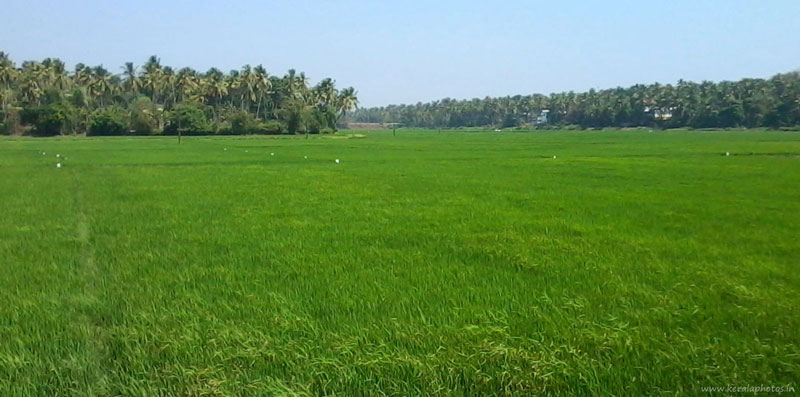Thrissur Tourism Photos – Kanimangalam
A snap of Kanimangalam Paddy field which is located in Thrissur, Kerala. Kanimangalam is a place surrounded with paddy fields. These paddy field lands called as “Kole fields“. The rest of the year these lands were in water. These region is under Thrissur corporation. Nowadays Paddy field cultivation is vanishing from our country. All paddy field are getting converted in to buildings, industry, shopping complexes etc. Nobody interested to work in the mud. But Kanimangalam paddy field is a role model to our new generation. Farmers of kanimangalam, palakkal are very interested in farming. Typically paddy fields are cultivated in south – East Asia. Archaeologist says that Wetland fields are originated in china. China attains the world largest outcome from agriculture cultivation. Wet lands of india are disappearing day by day. Paddy field cultivation is practiced in the countries such as Cambodia, Bangladesh,China,Taiwan, India, Indonesia,Iran,Japan,Northkorea,Southkorea,Malaysia,Myanmar,Nepal,Pakisthan,thePhilippines,Srilanka,Thailand,Vietnam,laosand so on. Cultivation of paddy fields has many merits and benefits. One of the major merits of cultivation is the contribution of atmospheric methane. It is in the range of 50 to 100 million tones of gas per annum.
The Malayalam word, kole means a bumper yield. This is a particular method of cultivation of paddy in wastelands. Probably these are cultivated during the month from December to May or June to November. These wetlands lies between 10° 20′ and 10° 40′ N latitudes and 75° 58′ and 76° 11′ E longitudes. The kole fields in kanimangalam are low lying tracts located 0.5 to 1m below the mean sea level and remain submerges for about six months. The total kole fields in thrissur are spread to more than eight blocks. The average rainfall to this area is 3,200 millimeter. And temperature varied from 28°C to 31°C. By considering the two near by districts of Thrisssur and Malappuram together spreads over an area of 13,632 hectares. The kole fields in thrissur are really a natural drainage system for thrissur city. Different parts of kole fields connects to canals and ponds . Finally it reaches to Arabian sea.The soil of Kole fields are alluvial soil and deposited in river banks of kechery and karuvannor. Thrissur kole fields attains the third position in india. And it also consists of more number of birds. Studies says that about 241 species of birds like spot billed pelican, darter, oriental darter , black headed ibis, painted stork, black bellied ter, cinereous vulture and greater spotted eagle are the visitors of such kole fields. Also special fishes like caranx, cyprinidae, mangrove red snapper ,megaflops cyprinoids and barramundi are the common fishes in kole fields.
The main threat to kole fields is the development of cities and towns. With the establishment of constructional companies , Kole fields get completely polluted and forced to stop. Not only the companies but also the arrival of coconut cultivation, construction of houses and buildings, sand mining and brick kilns, causes the decline of kole fields. This in turn causes fresh water shortages and everyone should depend on bore wells instead of wells. Our government of india approved 425 crore rupees for the development of kole fields. This fund will be used for infrastructure development , construction of bunds, canals, roads, farm mechansation and so on. Our Kerala government has switch on an agency named “kole development agency” in thrissur city on june 30 ,2016 .
